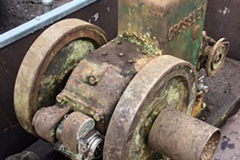Classic tippers and dumpers
Posted by Chris Graham on 20th May 2021
Mike Forbes presents photos from the Chris Hodge ‘Stilltime’ archive featuring classic tippers and dumpers in different quarry settings.

Classic tippers and dumpers: Seen being loaded in a quarry by a face shovel was Atkinson’s answer to the better-known Foden six-wheeler, the similar ‘Hylode’ DT1366, fitted with a Gardner or Cummins engine. A similar half-cab layout was used, with bodywork often supplied, as in this case, by Autolifts. On tradeplates, this was probably a demonstrator, possibly photographed at the press launch.
Here’s a fascinating selection of photographs from the archives showing classic tippers and dumpers hard at work under extreme conditions in quarries. Essentially, they’re all being used to move heavy material out of big holes in the ground!
The way things generally worked was as follows. An excavator or loader filled – or maybe even overfilled – a lorry’s body, which then moved the load off along the ‘haul road’ to a transfer station or works. There the excavated minerals are then used to produce the material, or prepared for onward delivery.
With these images, we’re mainly focussing at the extraction of building materials, such as sand, gravel, stone often used for the production of bricks, cement or concrete beams. An opencast coal mine would offer a similar scene. In each case, we have a dumper from the past, which was usually derived from the manufacturer’s heaviest road-going model, fitted with a heavy-duty tipping body.
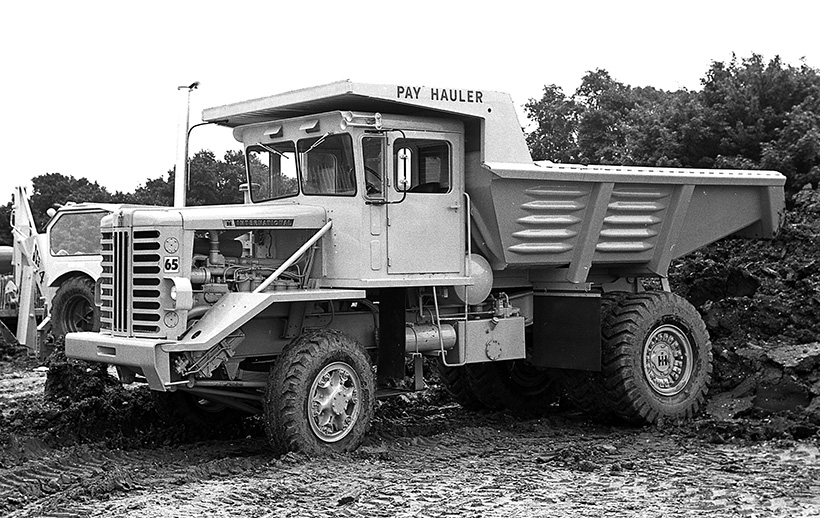
Actually photographed at a plant show in the mid-1960s, with a JCB 4 back-hoe/loader glimpsed in the background, this was an International Harvester ‘Payhauler’ 95 off-highway dumper, not dissimilar to the Euclid of the same era. This looks like the 25-ton version, available from 1956 onwards, first with a Detroit Diesel and later a Cummins engine.
Compared with the giant, specialist vehicles often used today, these were small vehicles but, nonetheless, impressive in their day. Some were little more than standard or ex-military lorries, beefed-up for their gruelling duties – as off-road work is always hard on everything, from wheels and tyres to engines and bodywork. There are a few road-going tippers included, as well.
Many minerals, of one sort or another, have to be are dug out of the ground and then need to be moved, first to the nearest road – or, in some cases, railway – then on to where they will be put to use. Sometimes, what we might term the ‘primary haul’ – from the quarry face – will go directly to the production process at ‘the works’. Cement would be an example of this. Aggregates – sand, gravel and stone – usually need ‘sorting’ into different grades or sizes, so these materials are usually taken to stock-piles, from where the road tippers will transport them to the site where they’ll be used. However, sometimes it’s the road tippers which venture into the quarry to collect the aggregates direct from the ‘face’.
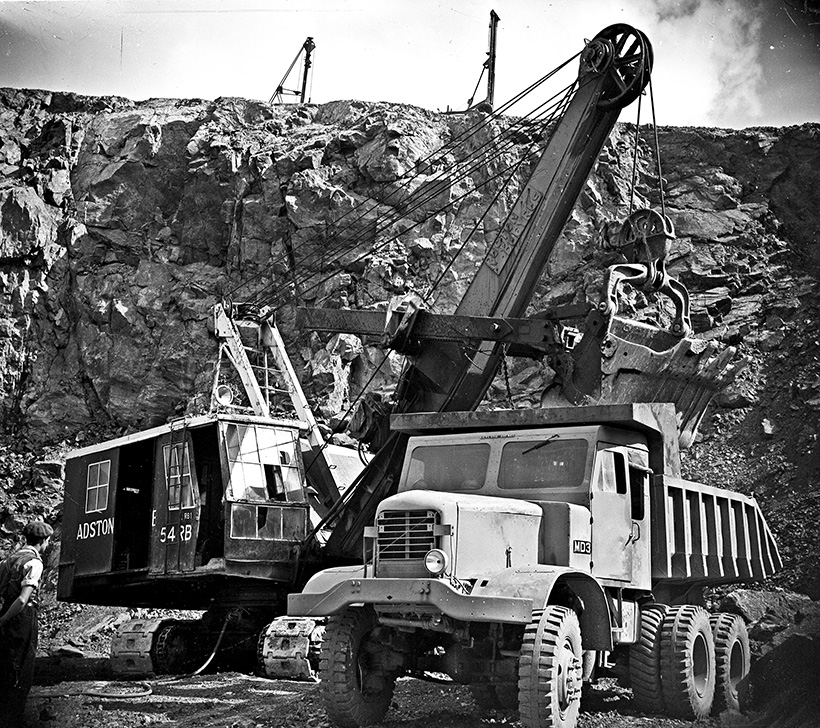
Here’s a Mack six-wheeler being loaded by a Ruston Bucyrus 54RB, working for the ‘Roadstone’ company in Northern Ireland. The Mack was probably a ex-military vehicle, judging by the rather crude replacement cab but, obviously, still got the job done in a demanding environment.
Archive photographs of tippers always seem to be popular. After all, how many of us can resist stopping to watch the hydraulic ram pushing the body up, the tailboard opening and the load cascading out of the back? Equally, we all enjoy watching some sort of excavator or loader – usually coming under the catch-all description of ‘digger’ – as it drops its bucket-load into the back of a tipper. Not to difficult to view on site, even in these health and safety-conscious days, but seeing the same thing in a quarry is a different matter. These places are usually much more private so, hopefully, these photos will provide a bit of a treat for many readers.
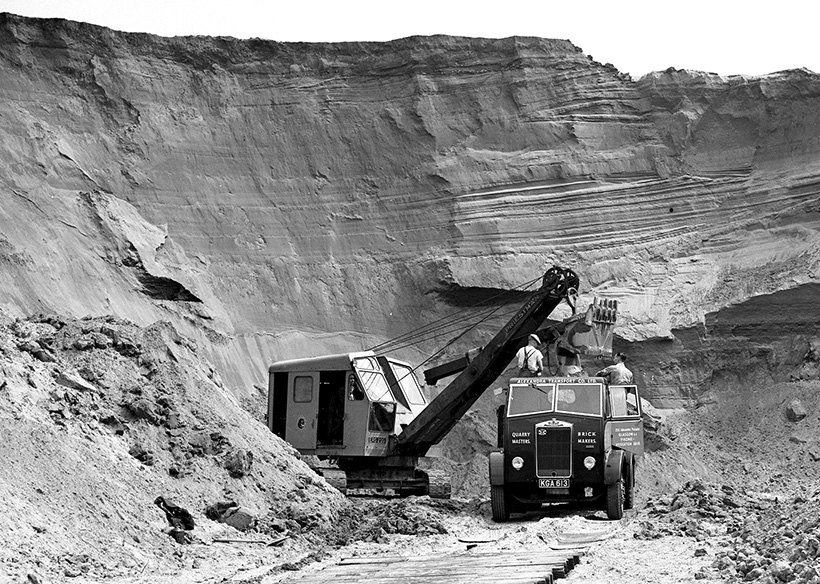
An Albion Chieftain, KGE 613 (Glasgow, 1952), fleet No.66, in the livery of Alexandra Transport Co, based in Bridgeton, Glasgow, being loaded by a Priestman ‘Cub’ face shovel, in the company’s quarry.
For a money-saving subscription to Vintage Roadscene magazine, simply click here
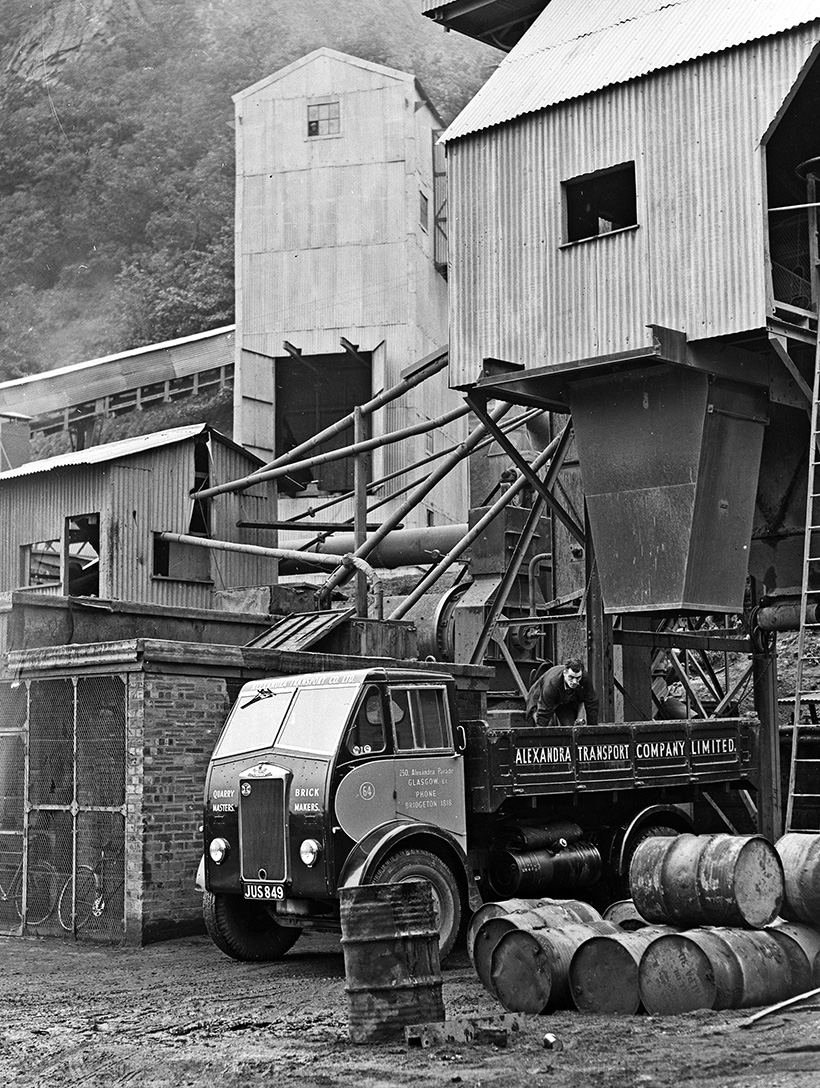
Another Albion Chieftain, JUS 849 (Glasgow, 1951), Alexandra Transport’s fleet No.64, shows off the company’s smart livery, about to be loaded under the hopper at the quarry.
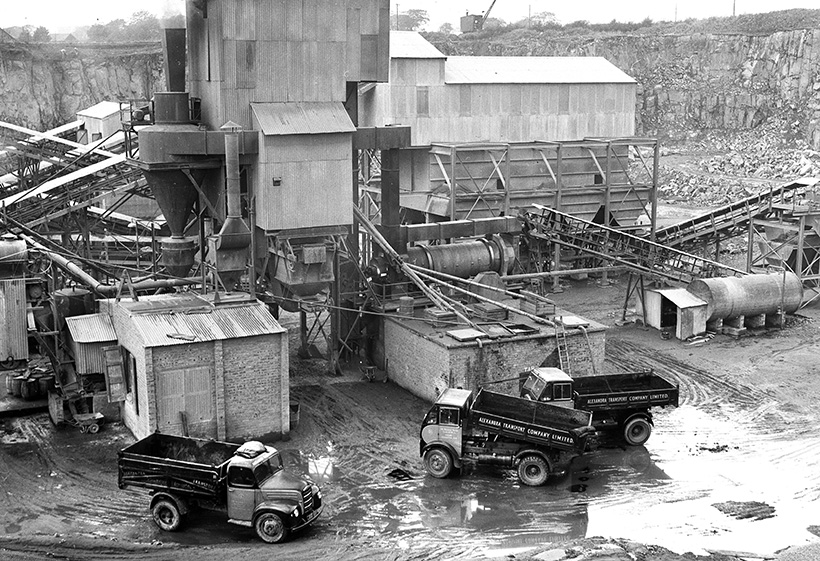
Against the background of the hopper and grading machinery, we can see three Alexandra Transport tippers; two Albions and a normal control short wheelbase Thames ET6. The company appears to have run a quarry and brickworks as well as transport.
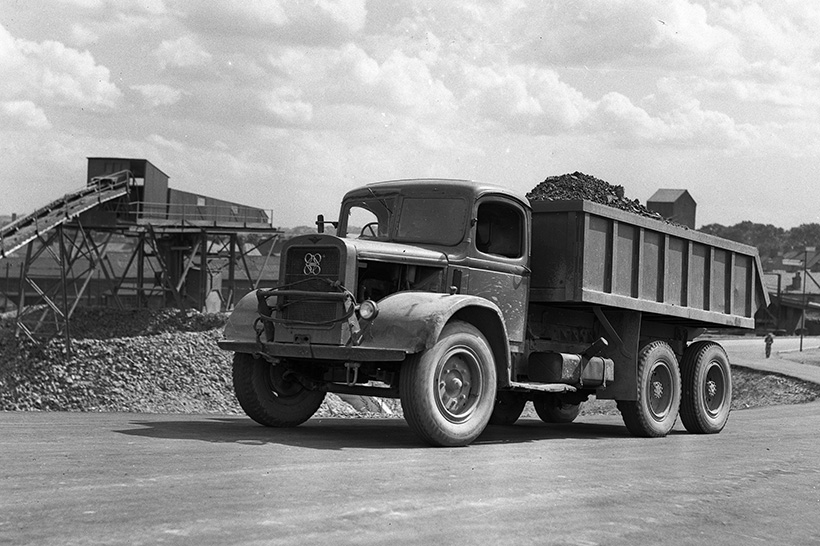
In the early, post-war years, ex-military Austin K6 six-wheelers were very popular as the basis of tipper, although basically lightweight vehicles. Judkins of Nuneaton operated them, both on the road and off-road in its quarry, as here, retro-fitted with a Perkins diesel engine and a scow- ended tipping body.
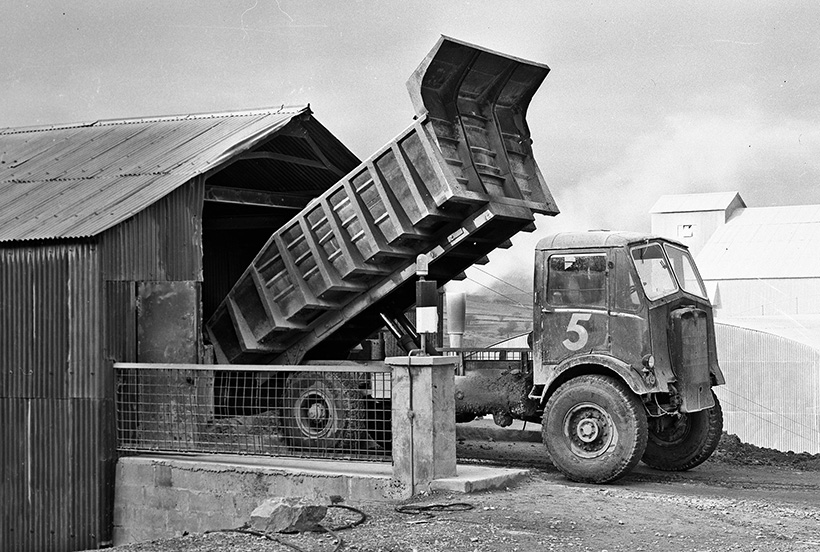
This looks like another ex-military vehicle; a post-war rebuild of an AEC Matador, with a later-style cab and dumper body. It appears to have seen better days, but was still working hard, transferring stone from the quarry to a large cement works.
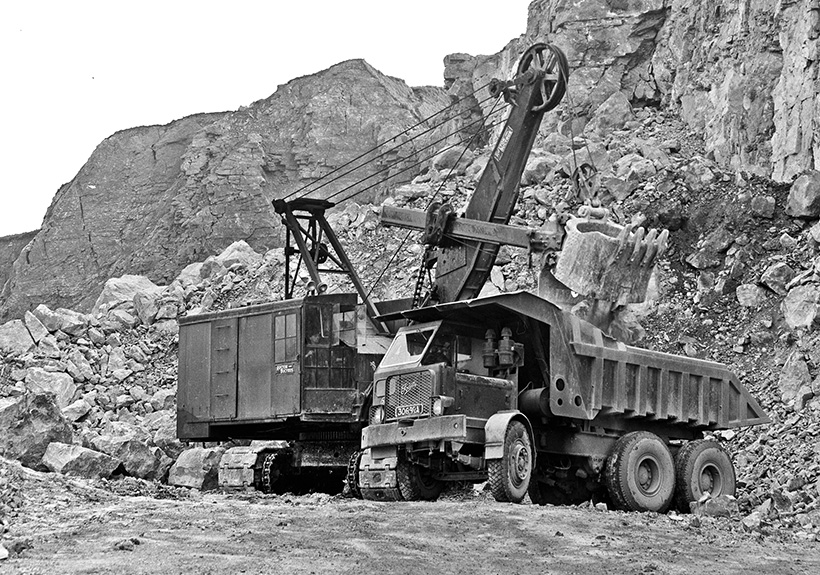
At the same quarry, we see a Foden FED/6 dump truck, being loaded by a Ruston Bucyrus face shovel. The six-wheeler was road-registered, 306 BRA (Derbyshire, 1956). The nominally 10½ cu yd body, with its large cab guard, would stand being over-loaded. The large air-cleaners can be seen beside the half-cab, while the large, single rear wheels and tyres were a feature of this model.
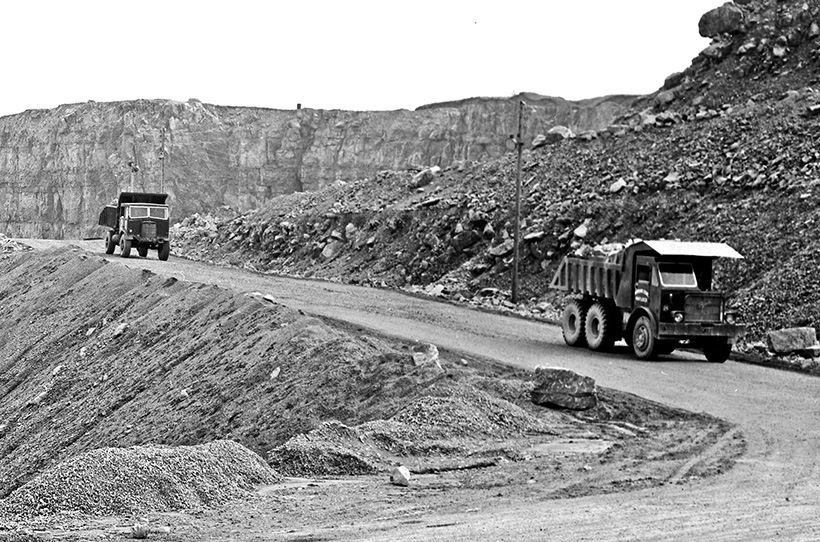
Examples of both Foden FED/6 and AEC Matador dumpers are seen on a ‘haul road’ in the rugged environment of Empire Stone’s Matlock quarry.
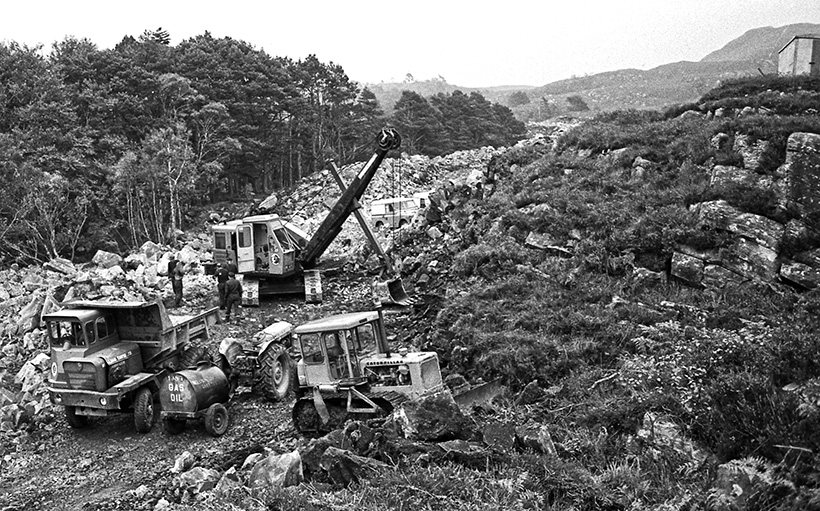
A busy scene at a site in northern Scotland, operated by William Tawse of Aberdeen, with a 1960s Aveling Barford RD017, actually the ‘baby’ of the company’s range of dumpers at the time. With a Leyland diesel engine, it was designed for a 17-ton payload. In the single cab, the driver had two steering wheels and positions. It looks as if the dumper had just been re-fuelled with ‘gas oil’ – also called ‘red diesel’, as it was dyed to show less duty had been paid for use off-road – from the tank trailer behind the Fordson Major tractor. Perhaps the Priestman face shovel or Caterpillar ’dozer would be next.

In spite of its actual size – those rear wheels would be as tall as a man – the Euclid dump truck looks dwarfed by Parkinson’s Bucyrus face shovel in this quarry scene. It looks as if a single ‘shovel-full’ would fill the Euclid’s body in one go.

This photo of it being loaded by a Bray loader was part of a sequence showing a Commercial Motor ‘road test’ of AEC 690 six-wheeled ‘Dumptruk’, CUS 858B; the 1964 Glasgow mark reflecting that the Scottish Land Development company was appointed distributor of these vehicles when they were introduced that year. These dumpers were built at the Thornycroft factory for a time, and the model was later produced under the Scammell, Leyland and Aveling Barford names.
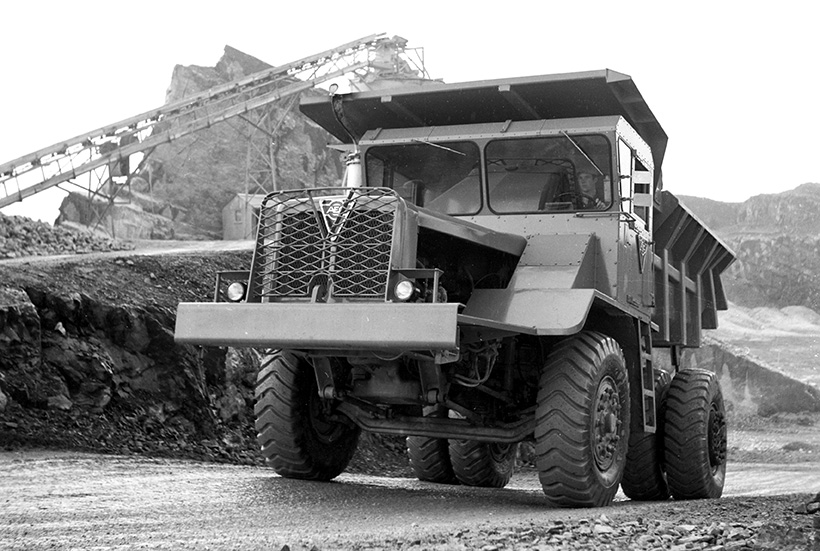
Part of the same sequence was this image of an AEC two-axle dump truck, the HDK4 with an 18 cu yd body, built 1959-65. This was fitted with a powerful, 340 hp, 18-litre AVT1100 engine.
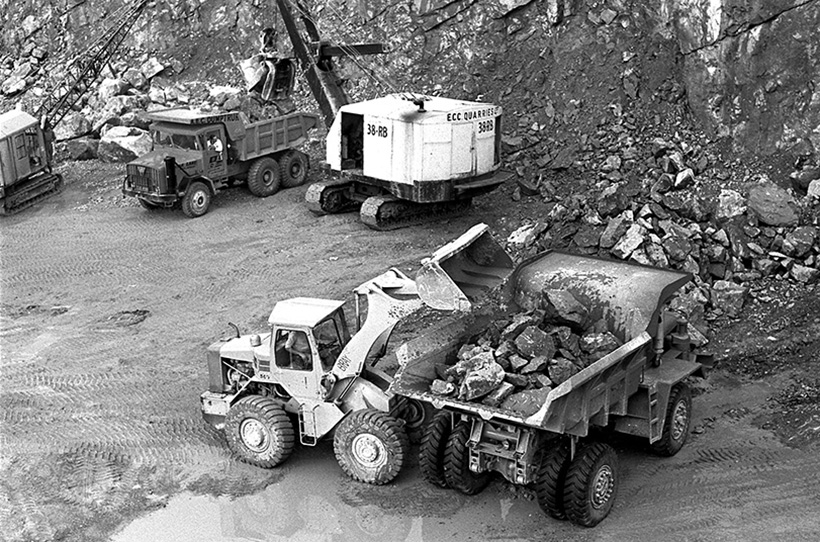
Both the AEC Dumptruk and HDK4 are seen here, with the Bray loader and a 38 R-B, during the test at an English China Clay quarry.
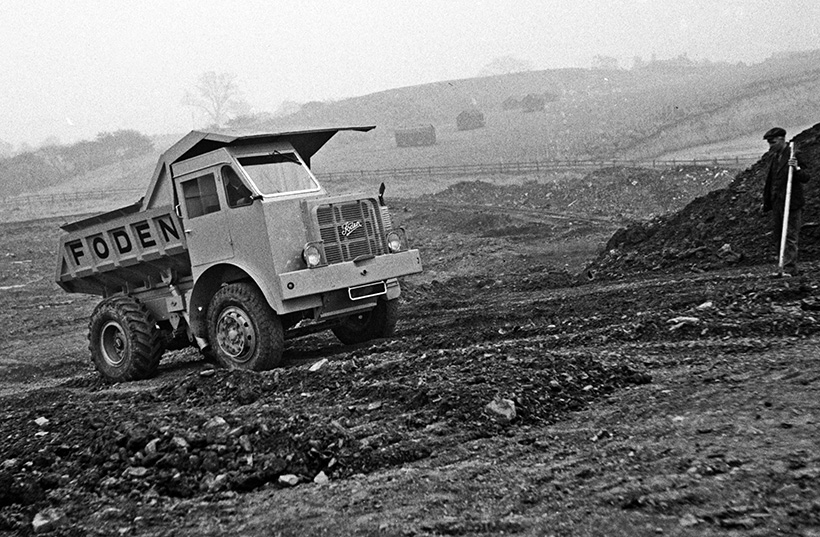
At an operator and press demonstration, a brand-new-looking half-cab Foden FED/4 is seen being driven up a steep hill.

One of a small number of colour photographs from the 1980s in the ‘Stilltime’ Collection, is this publicity shot of two, brand-new Leyland Cruiser 24-20 six-wheelers – a tipper and a mixer – in the livery of Moreton C Cullimore, at the operator’s quarry base, near Stroud, in Gloucestershire. Like the rest of the fleet, these lorries were named after Dickens characters, ‘Fagin’ and ‘Mr Slasher’.




